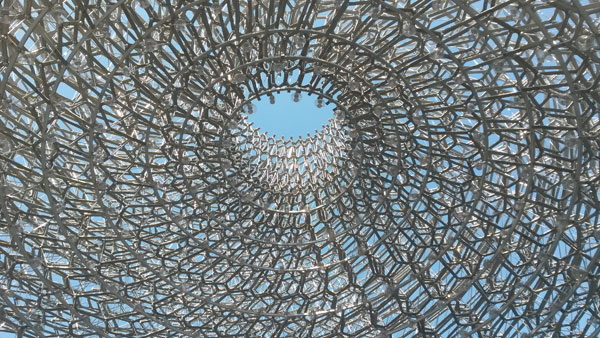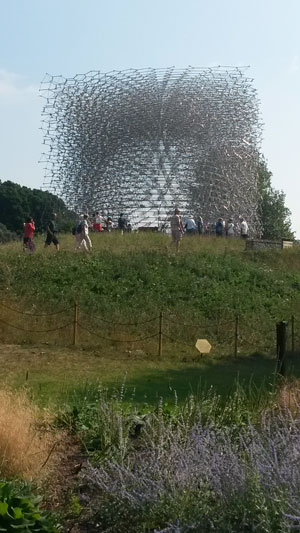Robert Nemeth – Building Opinions: The Hive

I’ve written in the past about the Crystal Palace in relation to the Great Exhibition of 1851. More recently, I mentioned Wembley Stadium along with a Tuscan pergola and Doric temple in the Patcham Peace Gardens as products of the British Empire Exhibition of 1924. But I’ve never mentioned any UK pavilions that have been brought back and reused following an Expo abroad.

The Hive has returned triumphantly from the 2015 Milan Expo after winning the Gold Award for Architecture and Landscape for our country and it’s in fact the first ever pavilion to be brought back and reused after such an event. As a passionate beekeeper with a huge interest in architecture, I couldn’t wait to see it at its new home in Kew Gardens on a recent excursion with Hove’s Secret Garden Group.
Resembling a cartoon whirlwind, the 40-tonne aluminium structure strikes quite a pose behind Kew’s double herbaceous borders. Although it takes influence from a beehive, its shimmering form could easily be compared to a hovering bee, or even a swirling swarm of bees.
At 17m in height, the Hive is large but certainly not domineering when considered against Kew’s other attractions such as the Palm House or Treetop Towers. Its permeable form makes it both intriguing and welcoming. The inside may be viewed from outside, but makes no sense until experienced.
Visitors are treated to a light, sound and touch extravaganza. The whole structure is linked to a nearby beehive. As the bees communicate in various ways, humans in the Hive receive a real-time approximation via pulsating LEDs, speakers and wooden touch sticks.
The designer, Wolfgang Buttress, has certainly done the UK proud. Anything to raise awareness of the bees’ plight should be commended.




















